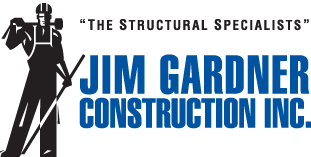Every day we are out meeting with home and business owners to provide guidance and estimates for structural, retaining wall, drainage, and foundation issues in the Bay Area. Here we share some photos and short write-ups about the issues we discovered and the best solutions for long term integrity.
Drainage Repair - Old Drain Lines
Old drain lines (before plastic) were often made with short sections of clay pipe.
These previously buried pipes have been exposed and show what is a common problems with clay drains- the sections have shifted and are no longer connected, causing water to drain into the ground.
Often when I’m trying to diagnose drainage issues, I will recommend that the client have a plumbing company do a video survey of their old drains. If the pipes are blocked or have standing water in them we
This brick retaining wall lacks an adequate footing and any type of reinforcement, allowing water and hillside soil forces to start pushing it downhill.
Retaining Wall Replacement - Lacking Reinforcement and Drainag
The drain holes at the bottom are usually ineffective, as they are often not connected to any drainage system.
I am suggesting the removal of the brick wall and the installation of a properly designed reinforced concrete wall with drainage.
Structural Repairs - Framing, Sheathing and Waterproofing Needed
Dryrot at the corner of this garage was caused by poor waterproofing detail where the roof drains transition from the roof deck out through the stucco wall. It is common to see this type of dry rot damage adjacent to the downpouts at your home.
Once the limits of the damage have been exposed we will repair the framing, install new plywood
The cracks in this retaining wall are getting large enough that they should be addressed. Lack of drainage and a poorly designed retaining wall (shallow and lacking a footing) are causing settlement, and the driveway retaining wall
Retaining Wall Drainage and Reinforcement
(on the left) is pulling on this wall. Since there is no rebar in this older wall, once these cracks open the sections of wall are free to move independently.
Since the concrete is generally in good condition, I think a reasonable solution to this slowly developing problem would be to remove the cracked section of concrete and drill into the remaining wall at both ends, putting in rebar to connect the pieces and then pouring new concrete in between.



